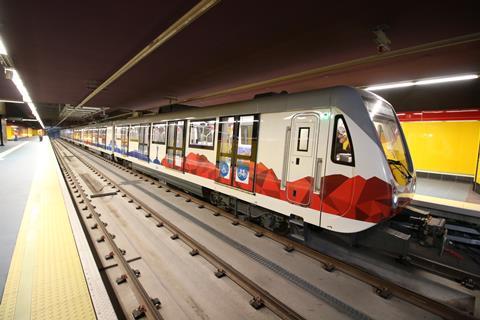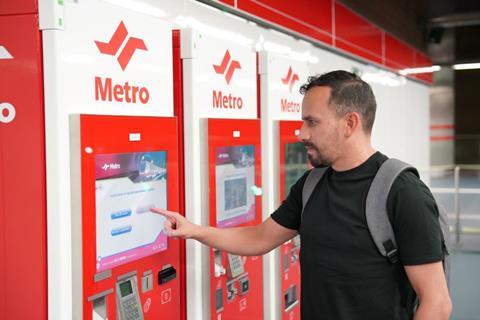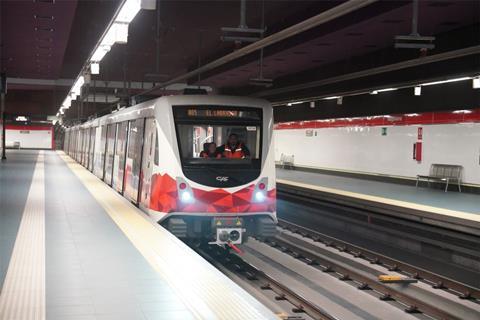
ECUADOR: Full revenue services on the Quito metro finally began on December 1, with local residents cutting ribbons to officially open each of the 15 stations.
Mayor Pabel Muñoz reported that 273 000 people travelled on the metro in the first three days, and called on citizens to treat the line with ‘pride and joy’.
Iniciamos operaciones del @MetrodeQuito desde las 5h30, ⏳ los dueños de esta obra tan estratégica son las y los quiteños, 👨👩👦👦 15 vecinas y vecinos inauguraron este sistema de movilidad tan moderno de la región. 🙌 Juntos vamos a utilizar y cuidar el Metro con respeto, empatía y… pic.twitter.com/4EVDS8tRjl
— Pabel Muñoz L. (@pabelml) December 1, 2023
Situated at an altitude of 2 850 m, Line 1 starts at Quitumbe in the south of the capital and runs 22·6 km underground through the city centre to El Labrador in the north. Trains run every 5 min the peaks and every 8 min off-peak, with an end-to-end journey time of 34 min.
Delayed opening

A formal inauguration ceremony had been held on December 21 2022, when the launch of a preview passenger services was planned for January 5.
However, problems with the ticketing system meant the limited preview service began on January 23. Peak-time only revenue services serving nine stations finally began on May 2, but were subsequently suspended on May 11 with the operator citing safety reasons.
Construction

The US$2bn metro project was financed by a consortium of Development Bank of Latin America, Inter-American Development Bank, the World Bank and the European Investment Bank.
The line was built by a consortium including Acciona (civil engineering), CAF (18 six-car trainsets), Bombardier Transportation/Alstom (signalling) and Siemens Mobility (electrification).
It is operated by the EOMMT 51:49 joint venture of Transdev and Colombia’s Metro de Medellín under a six-year contract.

The line has a design capacity of 400 000 passengers/day. Transdev said multimodal integration is planned for 2024, providing access to bus rapid transit and trolleybus stops.
‘December 1 2023 marks an important milestone in the history of public transportation in Ecuador: it’s the start of commercial operations for the country’s very first metro’, said Transdev Chairman & CEO Thierry Mallet. ‘With its route and connections to transportation networks, this metro becomes the capital’s new mobility backbone.’

















